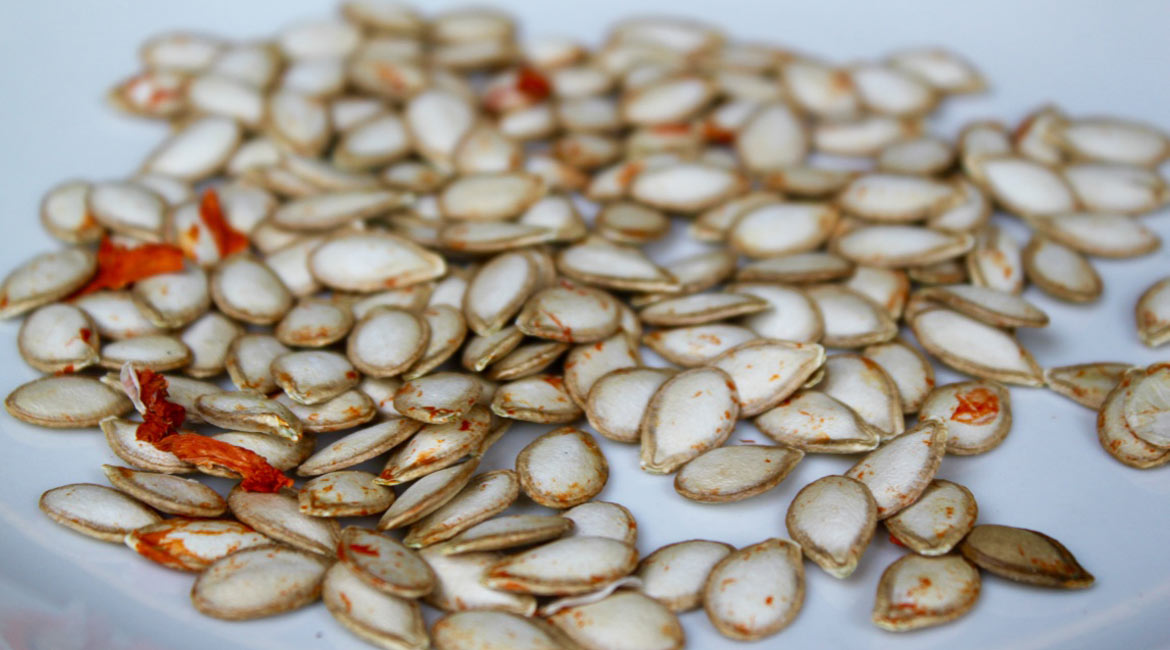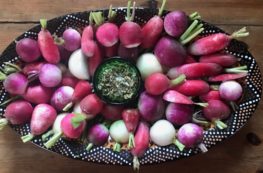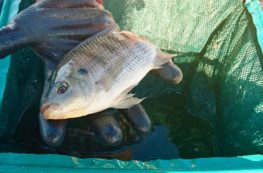When I cup seeds in the palm of my hand — be they basil seeds the size of pinheads or crimson-splashed lima beans — and really take the time to examine them, I lose myself. It’s hard to explain, and harder to articulate. The secrets they hold; their hereditary resilience; their unlimited potential. Their sexiness! To quote Simone de Beauvoir: “She is the Earth, man is the seed.”
The very act of a seed falling out of its pod — an inanimate, lifeless capsule — that somehow manages over time to transform itself into something as immutable as a baobab tree seems preternatural. That we ourselves are nourished by the variety of seeds we push into soil in our gardens is no less a miracle. Seeds are the beginning and the end; life and death; representations of the infinite circle.
We are all born of seed.

Seeds are to me what shoes were to Imelda Marcos: I can’t get enough of them. When I lived in the United States I could order any seed I wanted with the click of a mouse. To sate my appetite living out here in the African bush, where your choice of seeds is, in one word, limited, I’ve had to turn to seed-saving. Adelina Banda, my assistant, has saved seeds all her life so she’s the one who’s teaching me. She told me that if the majority of Zambians didn’t save seeds they wouldn’t eat.



Seed-saving is as old as mankind, it seems. Hunter-gatherer societies began to settle in one place to farm crops after they figured out how saving seed from one harvest led to the planting and cultivating for the next. Over time this led to saving only the best tasting, most productive and pest-resistant seeds, which has been the basis of standard farming practice for centuries.
That is until the likes of Monsanto came along.


Seed that is insufficiently dried is not properly dormant. According to the Real Seed Catalogue, it’s just napping. The seed is still burning through its stored reserves of energy and will eventually run flat, just like a cell phone left on. “You can’t put [seed] in a sealed container as it’s still breathing therefore it would suffocate. And without a sealed container it will soon reabsorb water from the air on the first humid day, and start preparing to germinate.”
So what to do you do? Their advice is to use uncooked rice to suck the water out of the seed to really dry it, after which the seed will go into hibernation.
For this the catalogue says you need:
- rice
- a big jar with a good lid
- an old pair of tights
Method:
- Use twice as much rice as you have seed. (Too much rice is fine; too little rice won’t work.)
- Bake the rice on a tray in a medium-hot oven for 45 minutes until it is bone-dry. While the rice is still hot transfer it into the jar. Fill it half-full and screw the lid on tightly.
- Wait for the rice to cool completely. (If you rush this step you’ll cook your seeds.)
- Fashion a bag out of the tights in which to store your seed. Open the jar and place the bag of seeds on top of the cool dry rice. Once again secure the lid tightly so no humidity can get in the jar.
- Leave the seed sealed in the jar with the dry rice for a fortnight. The dampness in the seed will be drawn out into the rice.
- Remove the bone-dry seed from the jar and transfer to an airtight bag. The seed should keep for several years.


Our parched, warm winter days are perfect for drying seeds. We don’t need to use rice. We lay the seeds outside in the open air on trays or plates where they dry over the course of a few days.
It’s important to remember that you can only save open-pollinated seeds. Hybridized varieties will not reproduce true to the original. When I first bought small quantities of seeds from South Africa and the United States to see if they would grow here, I chose mainly organic heirloom varieties. Most have thrived, and it is these seeds we are saving today, along with a selection of fruits that were planted by Chris before I came to the farm. These include tomatoes, cucumbers, beans, squash, peas, mixed herbs and greens, pomegranates, edible flowers, guavas, avocados, and wild rosella.
Eventually we hope to save the seed from all the plants we grow successfully. Seed-saving fits in well with our desire to live according to the principle of enoughness. It engenders a warm feeling of self-sufficiency and continuity.





11 Comments
Another gem – well done and love the imagery and story line of seeds.
Thank you so much, Louise. Seeds fascinate me!
This is beautiful – my grandfather from Italy would let all of his plants go to seed and the save them in his used medicine jars. Thanks for sharing
Thank you, Madeline, for taking the time to stop by my blog. I think so many seeds, especially heirlooms, one can buy in places like the United States today were originally brought in by immigrants from countries like Italy. Thank goodness for them is all I can say! All the best to you, Annabel
So interesting! New to me – thanks.
Thank you, Georgie … it’s a whole new world for me, too!
I never knew about using rice to completely dry out the seeds. I wonder if I could use those silica sachets that often come in packaging for small amounts of seeds. I’m a scatterer of flower seeds when I cut back the dead plants.
Anne … according to Chris, the scientist in our partnership, you should be able to use silica sachets/gel to dry your seeds. I’d be interested to learn if it works! Thanks so much for stopping by, and all the best to you, Annabel
Wonderful! I too love seeds and I’m sure all who are close to the soil will be familiar with that feeling of near-enchantment that a handful of seeds has the power to evoke! Magical mysterious capsules of life!
Thank you so much for your lovely comment, Terry! Seeds are indeed miraculous things … and as I mentioned above, I can’t get enough of them. Much gratitude for stopping by my blog. All the best to you, Annabel
[…] there’s the bigger issue of seed-saving about which I wrote here a few weeks ago. While you can’t save hybridized seeds, conscious gardeners have a […]
Comments are closed.